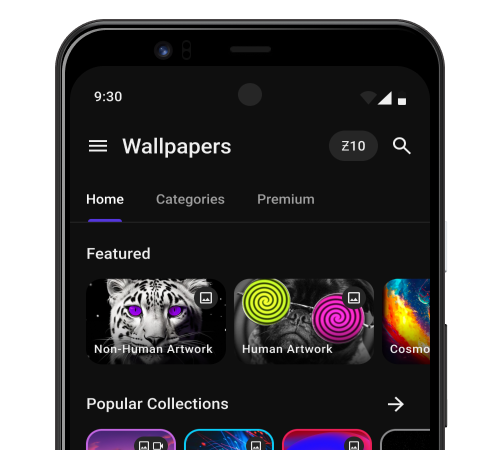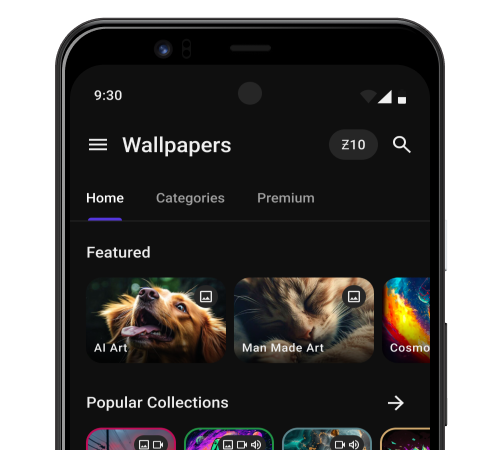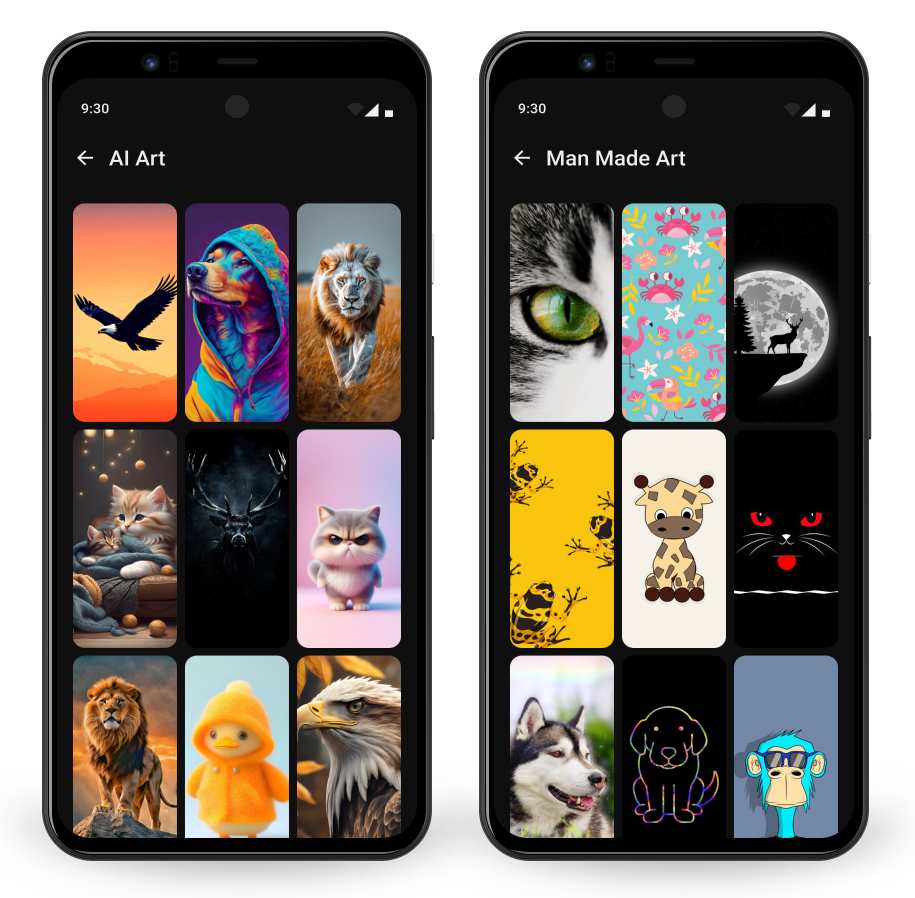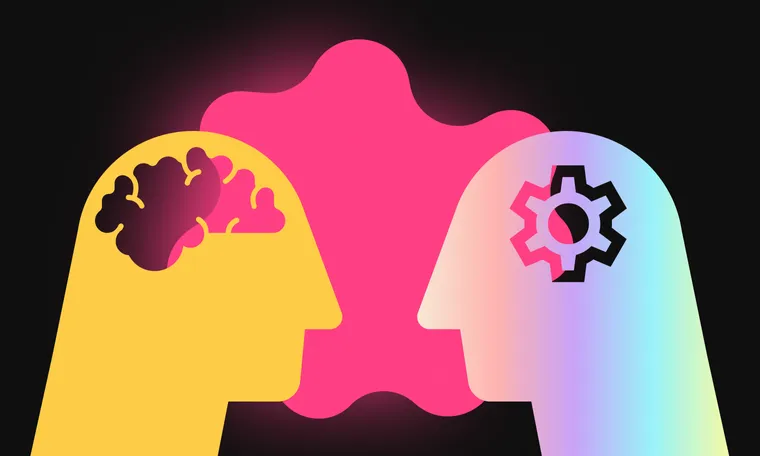Artificial Intelligence is such a craze these days it’s started cropping up in the unlikeliest places, such as washing machines and rice cookers. But a recent study found that boasting about your product’s AI capabilities may actually drive away more consumers than it attracts, which suggests that businesses have gotten more excited about AI than actual consumers.
At Zedge, we’ve watched our catalog of wallpapers absolutely explode over the past two years, as AI image generators have made it ever easier for just about anyone to create professional-looking* art (we put an asterisk there because, while AI definitely makes creating images much easier and faster, using it doesn’t guarantee those images will always be good: as the total number of wallpapers in our catalog has grown, so, apparently have the average number of fingers on human hands, or the possible ways to spell Christmas).
The first version of Stable Diffusion launched in late August of 2022; wallpaper uploads to Zedge rose over 10% the very next month, then rose sharply every month for most of the next year, and are now consistently 673% higher than they were before AI image generators became freely available.
So, a lot of our users clearly enjoy uploading AI generated images, but is anyone else actually eager to download them?
That’s a question we can test! And we have done so multiple times because, frankly, the results keep surprising us, so we keep re-running the experiment to confirm those results are accurate. But we keep getting the same answer: when we give our users a choice between viewing a collection of images advertised as being made by humans, or one advertised as being created by AI, the AI collection keeps winning. More people click on such collections, and download more items from them – even when those items sit behind ad gates or cost some money to purchase.
The first time we ran such a test, we presented visitors to the home page of our Android and iOS apps with two similar options, side by side. The first said, Non-Human Artwork and the second said Human Artwork.

Clicking on either one led to a long scroll of items created by AI image generators in the first case, or by actual artists in the second. I confess these results surprised and disappointed me, as I’d assumed the human-made collections would beat the robots. It’s not like anybody ever roots for the steam-powered drill to beat John Henry.
But the AI module won, handily: it received 73% more clicks than the Human module, and the items in that collection saw 338% more downloads than items in the Human collection! Bragging about AI in your products may turn off potential customers of washing machines and rice cookers, but apparently not customers of mobile phone personalization apps.
Still, the results troubled us. Perhaps our messaging had not been clear, and what looked like a clear-cut customer preference for AI generated images was instead just a desire to look at pretty pictures of animals – after all, “Human Art” could be interpreted to mean “pictures of people,” while “Non Human Art” might presumably lead to pictures of adorable animals. I know which one I’d choose, if those were my options.
So we re-ran the test with impossible-to-misinterpret verbiage, and made sure both modules had adorable animals in them:

But the results did not vary significantly. AI still beat Humans decisively, receiving 36% more clicks and 176% more downloads.

Articles such as the one linked to above, as well as this author’s social media feeds, keep telling us that shouldn’t be happening, that actual human beings don’t really want all this AI-created slop that’s overwhelming the Internet, and creeping into the physical world as well. To which all we can say is, well, please tell that to Zedge’s users.
Because they just keep buying the stuff!


